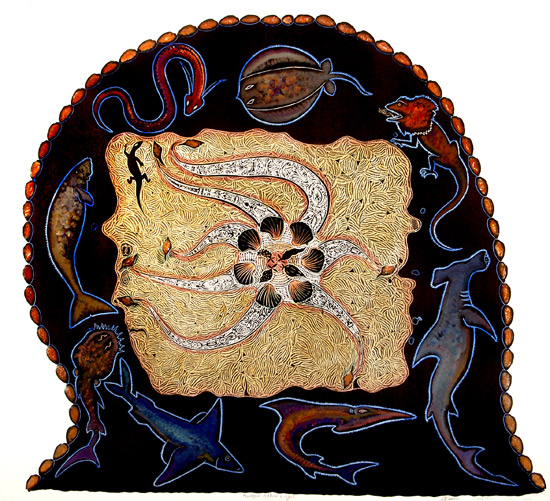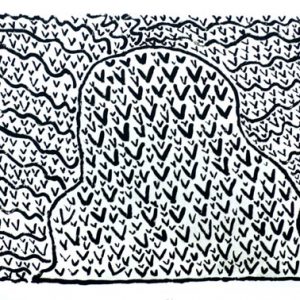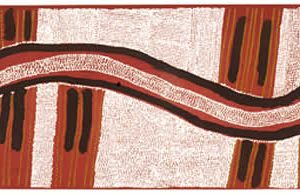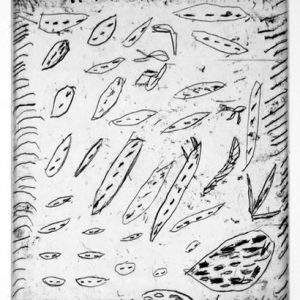Description
A collaborative work between Dennis Nona, David Bosun and Billy Missi, this lino is carved in the shape of a pearl shell. The outline of the shell is lined with wangai seeds that come from the local Mua Island native plum tree. This is an important tree as it provides the best carving wood on the island and its’ delicious plums are also eaten by the local people of Mua. In the middle of the pearl shell is an intricate design carved in the shape of a map of Mua Island. In the centre of this map you can see the bush vegetables that are typically found on the island. These are Kuthi (Wild Yam), Manutai (Cassava), Gabaur (Taro), and Urgabau (Sweet Potato). The seven Clam shells surrounding the vegetables represent elders from the seven tribes located on Mua Island. The elders are sitting in a circle, symbolising the communication that passes between them. Good communication between the chiefs is vitally important for the survival of the people of Mua as the seven villages are very closely linked both socially and economically. The villagers not only trade amongst each other but they also intermarry and the elders are responsible for ensuring that the laws and customs are properly observed and maintained. Radiating from each clam shell is a pathway representing the fact that these elders are not only speaking for themselves but that they are also speaking on behalf of the people of their villages. The trumpet shells represent the seven main villages all situated along the coast of Mua Island. The blue patches represent sacred waterholes and the brown patches represent sacred creation sites on the island. Surrounding the Island of Mua you can see a Sigai (Flying Fish), Im (Carpet Shark), Gelam (Dugong), Waur (Snake), Tupmul (Black Stingray), Waleku (Frill Necked Lizard), Kuris (Hammerhead Shark), and a Kaigas (Shovel Nosed Ray; these are the seven totems of the seven villages of Mua. The totems are placed offshore from where their respective villages are located.





